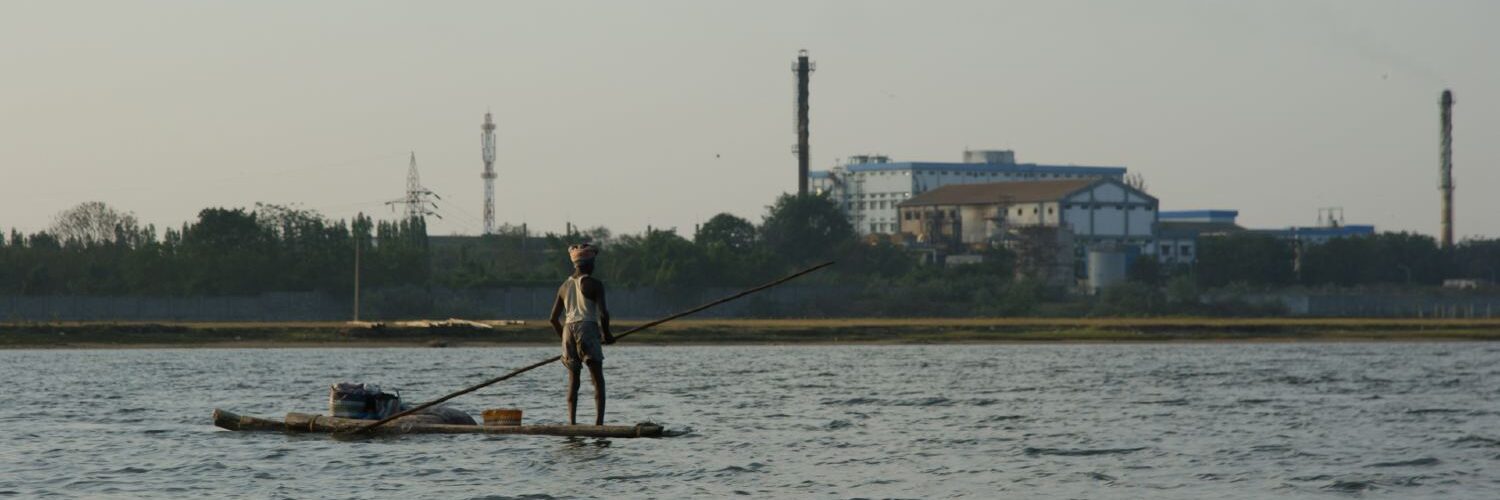PRESS STATEMENT
13 February 2006
CUDDALORE — Twenty-five people from Semmankuppam, Sangolikuppam, Sonnanchavadi, Chitrapettai, Rajapettai, Tamanampettai, Sothikuppam and Eachangadu villages of Cuddalore district visited Mettur Dam on 21 January, 2006, to assess first-hand the pollution reported to have been caused by Chemplast Sanmars PVC factory in the area.
The fact-finding team witnessed the following:
- Toxic effluents from Chemplasts PVC factory were found to be leaching out through springs. The effluents had crossed the compound wall separating the PVC factory from a tar road that runs between the PVC factory and another Chemplast unit manufacturing raw material for PVC. The foul-smelling effluent water had a white-coloured creamy layer over the surface. Upon questioning, local people said that the toxic PVC wastes, from where the effluents emanated, were buried about 8 years ago. However, over the last few years, some of the burial sites have been covered with concrete. The presence of such toxic effluents also indicates to possible reasons for the pollution of environment and groundwater.
- We visited the agricultural fields and irrigation wells of Mrs. Indira. The well water had a strong smell of chemicals. According to Indira, people who consume foodcrops raised using this water developed a white patch on the lips. She also complained that her daughter is a chronic heart patient. We also learnt that several wells in the area had been affected by Chemplasts effluents. We also visited a number of other fields. They reported loss of crops due to flooding of their fields with rainwater contaminated by Chemplasts effluents. We surveyed some of the affected lands. Some lands had a thick white crust, and others were burnt black. Several acres of land had been rendered infertile.
- Chemplast has laid a pipeline that discharges toxic effluents throughout the day into the River Kaveri, downstream of the Mettur Dam. The water from this area mixes with drinking and irrigation users downstream. The water has a bad smell and yellow colour. The rocks nearby too were coloured yellow. Mr. Sankar, an ITI student, who was bathing nearby complained of skin problems.
- We visited Mr. Sadayan Gounder, an ex-worker from Chemplasts chlorine plant. He said he became too ill to work after handling mercury wastes. Even now, he is unable to walk, and spends several thousand rupees every month in health care.
- On the evening of 21.01.06, we met journalists and shared our findings with them.
- Chemplast has claimed that we operate factories in several places, and that these factories are of international standards. They claim that they operate their factories without polluting the air or groundwater. However, their factories in Mettur, Karaikal and Kadampuliyur are reportedly operated very poorly. Effluents from Chemplasts Kadampuliyur alcohol distillery is known to have caused massive pollution, and has affected farming in that area. They are said to be openly dumping effluent water through tankers in farmlands, ponds and on road sides. Therefore, we request that Chemplast prove that it has not caused harm to local communities in any of these places.
- Already, water, land and air pollution is intense in SIPCOT. Pollution-impacted communities in SIPCOT feel threatened by the present plans to locate yet another polluting factory, Chemplast Sanmar. Keeping in mind the fact that we have suffered immensely as a result of pollution from existing factories, it is our position that the PVC factory should not be allowed to set up in Cuddalore.
NOTE: Results of samples taken of pollution due to Chemplast in Mettur are awaited. We will communicate them to you as soon as we receive them.
Signed/
Villagers from the vicinity of Chemplast project site
Chemplast Pollution: Report of a 25-member Fact-finding Teams Visit to Mettur
